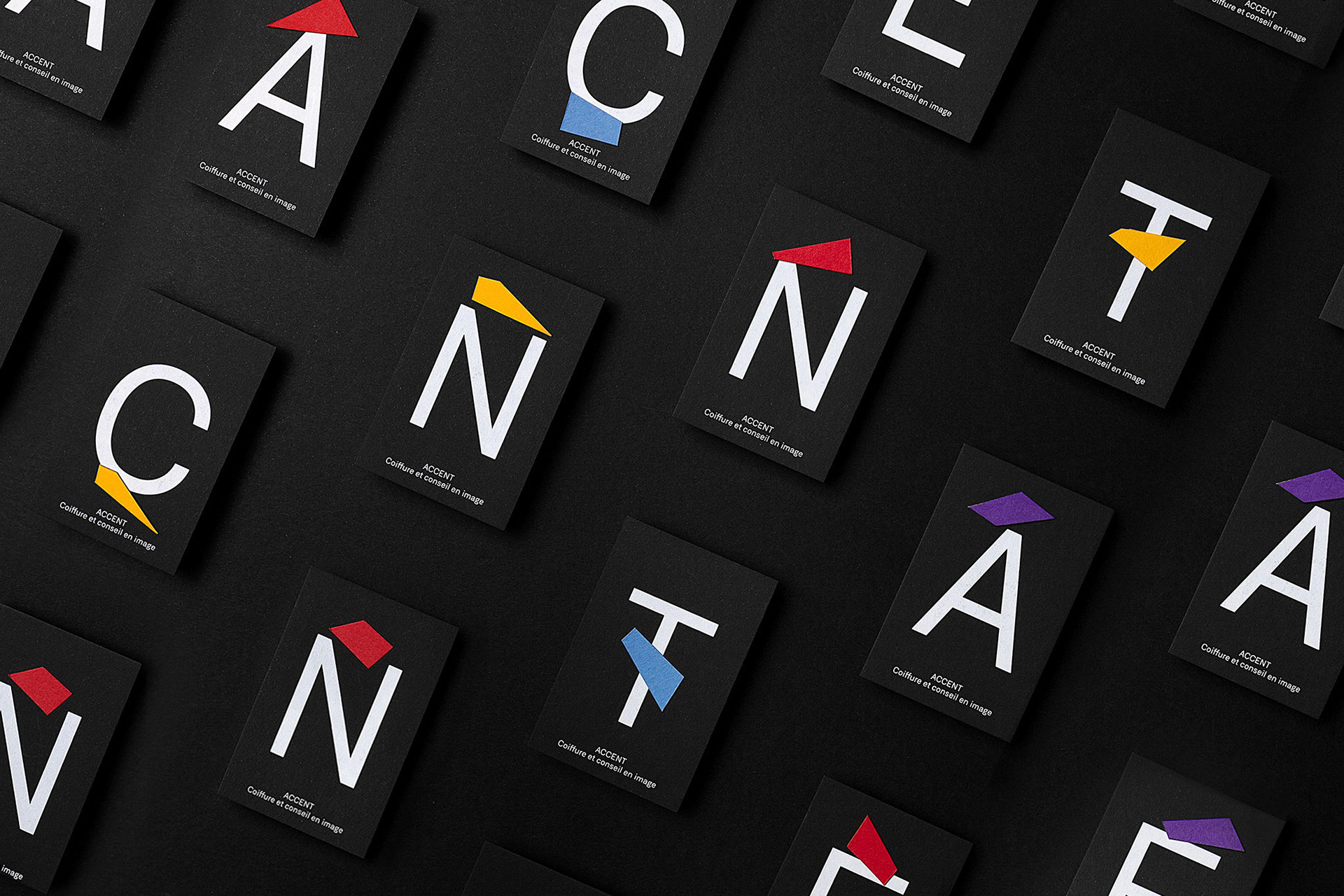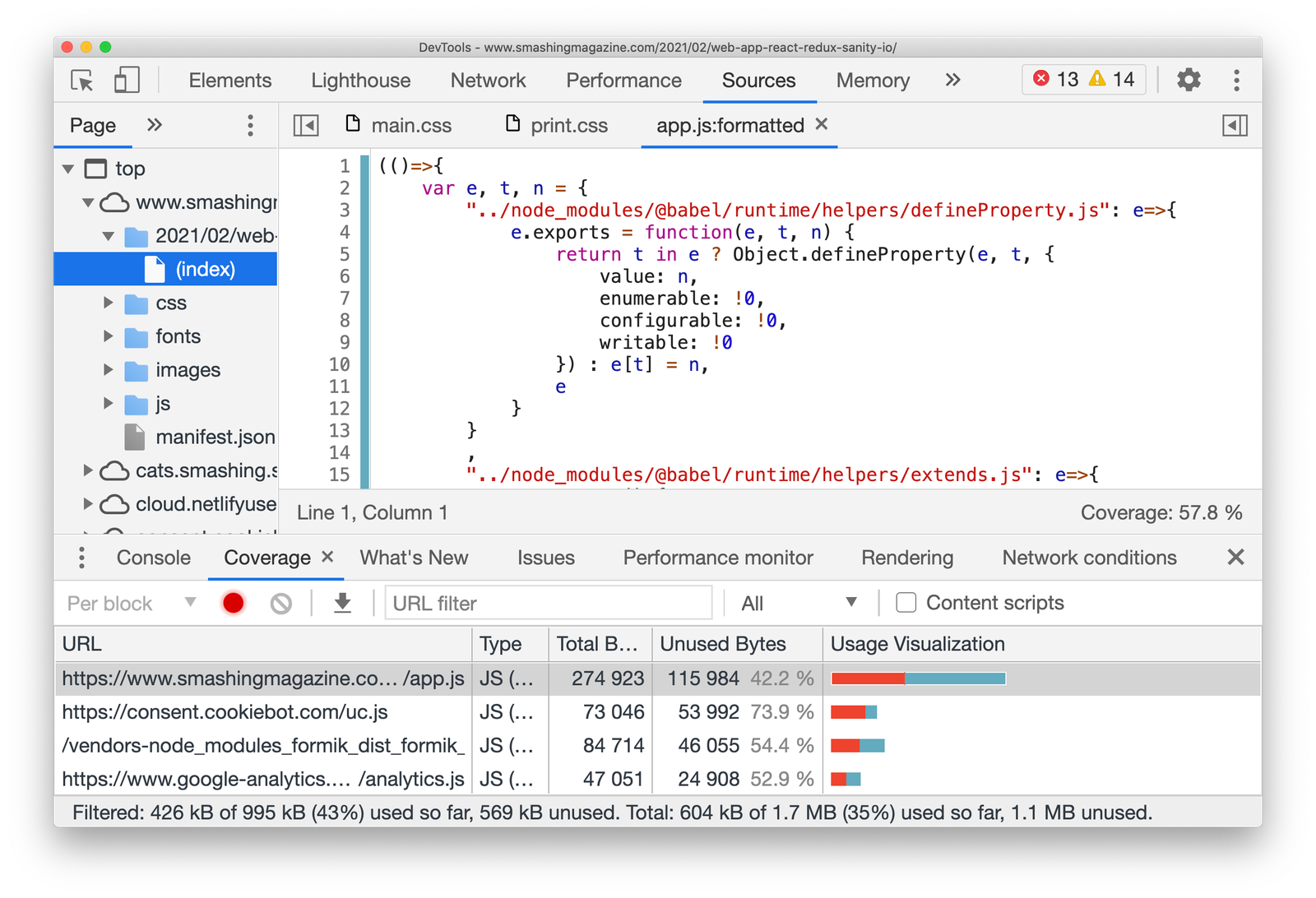About admin
This author has not written his bio yet.
But we are proud to say that admin contributed 3960 entries already.
Entries by admin
ACCENT Branding and Visual Identity
/0 Comments/in Random Stories/by adminOriginal Source: http://feedproxy.google.com/~r/abduzeedo/~3/nO3fufIPokc/accent-branding-and-visual-identity
ACCENT Branding and Visual Identity

abduzeedo03.18.21
VELKRO shared a branding and visual identity project for Accent, a new brand created in 2019 that specializes in image services, such as hair styling and image coaching. It focuses on providing accurate, individualised advice and making every client feel like one-of-a-kind.
We imagined a concept that highlights and champions individuality. As every client is unique, we sought to ensure that this (corporate) identity reflected that. We decided to play with the concept of personalised and cut accents by hand, making every piece of each application as unique as any customer. An identity with a strong retro personality, sober, professional and colorful at the same time.
Credits
Photography Cassandra Stuyt
Moka Clube – Barrel Aged Rocket Fuel
/0 Comments/in Random Stories/by adminOriginal Source: http://feedproxy.google.com/~r/abduzeedo/~3/2Hj70QW7RnM/moka-clube-barrel-aged-rocket-fuel
Moka Clube – Barrel Aged Rocket Fuel

abduzeedo03.18.21
Diego Carneiro shared a branding and packaging design project called Moka Clube – Barrel that hits home for this coffee-loving Brazilian. This, my friends, is real coffee. Twice Brazilian, it is the most unique marriage of coffee + liquor we’ve come across. These are coffees aged in wooden barrels where excellent whiskeys, wines, rum and, of course, cachaça rested before, because nothing is more Brazilian than good coffee and cachaça. The product within the package brings a different point of view, not only being a prize winner amongst heavy hitters, it’s different processes of production always deliver that well deserved happy hour feel.
The packaging with handmade letterings and illustrations, tells the history of coffee in Brazil
At the forefront of farm to table, Moka Club is the first subscription service for specialty coffees in Brazil. In 2012 when special coffee was only exported, Moka Club was born as a manifest: Brazilian coffee for Brazilians, with the purpose of distributing the best coffee in the world within the national territory. Rich in different terroirs, Brazil stands out for the wide range of possible flavors for the coffee beans it produces. This abundance is due to the unique natural capacity that the country has in the soil, this land of immense fruitfulness and cultivation makes the job of hunting the best coffees even more exciting and not monotonous, making the endless search for different flavor profiles our great challenge.
The packaging with handmade letterings and illustrations, tells the history of coffee in Brazil, has an older language and reference in the Victorian period, rich in ornaments and details. It’s like discovering a special package that had been forgotten for decades in your grandmother’s attic. That’s it, this coffee is a time machine itself, it is a coffee unlike any other coffee you’ve ever tasted, it’s an experience. Opening this can is like stimulating your senses, from contact to aroma and finally the taste…and to enjoy in moderation of course!
How to Take Screenshots on Android — Better and Faster
/0 Comments/in Random Stories/by adminOriginal Source: https://www.hongkiat.com/blog/better-screenshots-android/
In this post, I’m going to show you one of the best alternatives out there when it comes to taking screenshots more efficiently and faster using an Android device, using an the app –…
Visit hongkiat.com for full content.
How to Stop Facebook From Getting Your Phone Contacts
/0 Comments/in Random Stories/by adminOriginal Source: https://www.hongkiat.com/blog/stop-facebook-getting-phone-contacts/
When you first install Facebook Messenger, the app asks if you’d like to sync it with your phone’s contacts as a feature of convenience. However, once you activate this feature, it stays…
Visit hongkiat.com for full content.
Getting Started With Inclusive Web Design
/0 Comments/in Random Stories/by adminOriginal Source: https://www.webdesignerdepot.com/2021/03/getting-started-with-inclusive-web-design/
 A key part of designing successful websites for clients is making sure that as many end-users as possible can access and enjoy that site.
A key part of designing successful websites for clients is making sure that as many end-users as possible can access and enjoy that site.
So, what if you discovered that around 1 billion people couldn’t enjoy your designs? Even if those people manage to click on a link and visit the website that you create, they might not be able to understand what’s being sold or navigate to the checkout page.
According to statistics from the World Bank, there are 1 billion people with disabilities worldwide. That’s 15% of the total population of the globe.
Despite this, many designers fail to consider customers with differing abilities when creating an engaging app or website. Unless your client explicitly tells you that they’re supporting customers with disabilities, you might even not think about those users at all.
Learning how to embrace the concept of inclusive web design means that you deliver better results to your clients; the more customers your clients can reach, the more praise and positive reviews your designs will get.
So, how do you introduce accessibility in your design choices?
What Is Website Accessibility?
In broad terms, inclusivity refers to activities or behaviors that empower marginalized people in society. Designing for inclusivity means making your content more accessible to anyone dealing with a mental or physical issue that may make it harder for them to use a traditional site.
Ultimately, accessibility is one of the main goals of an inclusive design strategy. When you make websites or applications more accessible, you tweak aspects of your UI and code to make the site as approachable and usable as possible to people with certain limitations.
According to the Web Accessibility Initiative, many modern sites and web tools are designed without the needs of those with disabilities in mind. This creates accessibility barriers that make websites almost impossible for some people to use.
Here are just some of the different types of disability that can affect the way end-users interact with a website or app:
Cognitive issues: Affecting understanding and making it harder to navigate sites;
Auditory issues: Preventing customers from listening to videos and audio content;
Neurological issues: Making certain terms and actions more difficult on your site;
Physical issues: Making it hard to swipe or tap certain tools;
Speech problems: A common issue with voice UI designs;
Visual issues: Preventing a positive experience on highly visual sites.
Web accessibility can also be about making life easier for people who encounter problems in particular situations. For instance, those with muscular problems might have a harder time using buttons and links on a small screen.
So, how do you make your designs more accessible?
Know Your Audience
There’s more to inclusive web design than making your fonts a little bigger and hoping for the best. To deliver a truly accessible experience, you need to know the people and groups that your client is targeting. Spending some time going through your customer’s user personas and asking them questions about those with a disability can help you make informed decisions.
For instance, the Microsoft Inclusive Design toolkit asks designers to recognize exclusion, examining the parts of their website that might be inaccessible, and learn from diversity.

Before designing anything, ask yourself whether you can:
Address any unique needs, like sight issues or hearing problems;
Replace traditional solutions with something more unique. For instance, rather than relying on colors to highlight a portion of text, could you use font-weight instead? This might be ideal for someone with color blindness;
Create something that appeals to both customers with and without disabilities.
Design a Clean and Clear Layout
Any website design should be focused on clarity first.
Whether you’re designing for inclusivity or not, the aim should be to deliver as much of a simple and straightforward experience as possible, avoiding any web design sins along the way.
For instance, no-one likes a messy design full of unreasonable navigational signs. You need a site full of understandable links, buttons that are easy to click on any screen, and large fonts that are easy to read.
Whenever you’re creating a new element for a website or app, ask yourself how you can make life easier for customers from all backgrounds. For instance, Parramatta park uses excellent contrast, clear fonts, and ideal element sizing to ensure that its website feels as easy to use as possible for customers.

Notice how the buttons are clear and easy to press. The colors are bright and engaging on any screen, and the navigation is simple to follow too. Remember, when you’re designing an inclusive prototype:
Test navigation options and ensure they’re easy to use;
Don’t overcrowd the screen, remember that less is more when reducing cognitive load;
Make sure that your design remains easy to use on any screen.
Simplify Language
The visual elements on an inclusive website need to be as simple and easy to understand as possible. However, it’s important not to forget about the way that you handle the written word too.
Using simple terms instead of complex industry jargon can make a massive difference to those with reading issues. There’s also typography to think about, from the color and contrast of your words against your chosen background to the font’s clarity.
Remember, suboptimal design with both imagery and language affects those without disabilities too. Following basic rules for simplicity delivers a better experience for anyone that visits your site.
Make sure you:
Underline, bold, or re-size links for visual contrast;
Enforce proper line spacing with around 1.5x the font size;
Enable consistent paragraph spacing;
Use simple language to reduce cognitive load;
Describe abbreviations when using them;
Use clearly-worded headings to structure content logically;
Look at the design choices for text on the Nomensa website, for instance. Plenty of white space makes content easier to read. Simple words are understandable and engaging. Even the font choice mimics the logo while offering readability.

Optimize Web Design Colors
Inclusive web design trends will come and go. However, color and contrast will always be essential to your decisions.
By making sure that your design elements meet the minimum color contrast ratios defined by the WCAG means that you’re supporting readability for visually-impaired users and improving experiences for customers that aren’t visually impaired as well.
For designers who need extra help in this area, tools like Stark help measure color contrast. This tool also offers a range of other tools intended to support accessibility too.

Remember, the minimum ratio you need to access will depend on the element that you’re designing. The WCAG recommends the following guidelines:
3:1 ratio for graphical objects (charts);
3:1 ratio for focus, active states, and hover;
3:1 ratio for clickable items and form components.
While you’re working on your color contrast strategies with apps like Stark, make sure that you consider the needs of users with color blindness too. 4.5% of the world doesn’t see color the same way as everyone else. If you’re finding it difficult to achieve the right contrast while sticking to your customer’s brand guidelines, try underlining and bolding elements too.
Consider Video and Audio Elements
Finally, these days, more companies are opting to embed video and audio content into their sites. These visual and auditory tools can offer useful information about a brand and what it does. However, you could struggle to deliver vital information to some customers through video and audio alone.
Captions for video content could be essential for those with hearing loss. You may need to think about adding transcripts to pre-recorded videos that people with hearing impairments can access. These transcripts and captions are also helpful for anyone who doesn’t have access to audio on smartphones or computers.
Transcripts can also help those with visual impairments by giving a text-to-speech tool something to describe to your user. That way, everyone gains useful information. Look at this captioned video from the University of Washington, for instance. It ensures that everyone can understand what’s going on in the content. If you add transcripts to your website pages for clients, you could also help them benefit from improved SEO too. Transcripts deliver more keyword-ranking opportunities than videos and podcasts on their own.
Design for Accessibility First
For designers to excel at delivering truly inclusive UI environments, they need to become as good at creating websites for people with disabilities as they are at creating interfaces for people like themselves. As designers, we try to be as inclusive as possible, but it’s easy to get caught up thinking about making a website easier to use for us.
If you can step into the shoes of someone that isn’t like you, and think about uncommon needs first, then you may find that you deliver a stronger, more engaging experience for every user.
For instance, rather than designing a website for someone with the same visual needs as you, then thinking about making tweaks for those with color blindness or vision issues, think about the needs of those with disabilities first.
You can learn more about putting uncommon needs first by checking out Vasilis Van Gemert’s blog post on the “Method of Crisis.”
Accessibility is Good for Business
Inclusive web design, or designing for accessibility, is all about maximizing the potential audience that your clients can earn. Whatever situation end-users find themselves in, you should ensure that you’re taking advantage of inclusive design.
If you can prove to your clients that you can deliver for all customers’ needs, you can unlock a much larger audience and many more opportunities.
Source
p img {display:inline-block; margin-right:10px;}
.alignleft {float:left;}
p.showcase {clear:both;}
body#browserfriendly p, body#podcast p, div#emailbody p{margin:0;}
The post Getting Started With Inclusive Web Design first appeared on Webdesigner Depot.
CSS Auditing Tools
/0 Comments/in Random Stories/by adminOriginal Source: https://smashingmagazine.com/2021/03/css-auditing-tools/
How large is your CSS? How repetitive is it? What about your CSS specificity score? Can you safely remove some declarations and vendor prefixes, and if so, how do you spot them quickly? Over the last few weeks, we’ve been working on refactoring and cleaning up our CSS, and as a result, we stumbled upon a couple of useful tools that helped us identify duplicates. So let’s review some of them.
More On CSS:
Comprehensive Guide To CSS Layout
Managing CSS Z-Index
How To Align Things In CSS
Things You Can Do With CSS Today
Useful DevTools Tips and Shortcuts
Also, subscribe to our newsletter to not miss the next ones.
CSS Stats
CSS Stats runs a thorough audit of the CSS files requested on a page. Like many similar tools, it provides a dashboard-alike view of rules, selectors, declarations and properties, along with pseudo-classes and pseudo-elements. It also breaks down all styles into groups, from layout and structure to spacing, typography, font stacks and colors.

One of the useful features that CSS Stats provides is the CSS specificity score, showing how unnecessarily specific some of the selectors are. Lower scores and flatter curves are better for maintainability.

It also includes an overview of colors used, printed by declaration order, and a score for Total vs. Unique declarations, along with the comparison charts that can help you identify which properties might be the best candidates for creating abstractions. That’s a great start to understand where the main problems in your CSS lie, and what to focus on.
Yellow Lab Tools
Yellow Lab Tools, is a free tool for auditing web performance, but it also includes some very helpful helpers for measure the complexity of your CSS — and also provides actionable insights into how to resolve these issues.

The tool highlights duplicated selectors and properties, old IE fixes, old vendor prefixes and redundant selectors, along with complex selectors and syntax errors. Obviously, you can dive deep into each of the sections and study which selectors or rules specifically are overwritten or repeated. That’s a great option to discover some of the low-hanging fruits and resolve them quickly.

We can go a bit deeper though. Once you tap into the overview of old vendor prefixes, you can not only check the offenders but also which browsers these prefixes are accommodating for. Then you can head to your Browserslist configuration to double-check if you aren’t serving too many vendor prefixes, and test your configuration on Browsersl.ist or via Terminal.
Project Wallace
Unlike other tools, Project Wallace, created by Bart Veneman, additionally keeps the history of your CSS over time. You can use webhooks to automatically analyze CSS on every push in your CI. The tool tracks the state of your CSS over time by looking into specific CSS-related metrics such as average selector per rule, maximum selectors per rule and declarations per rule, along with a general overview of CSS complexity.

Parker
Katie Fenn’s Parker is a command-line stylesheet analysis tool that runs metrics on your stylesheets and reports on their complexity. It runs on Node.js, and, unlike CSS Stats, you can run it to measure your local files, e.g. as a part of your build process.
DevTools CSS Auditing
Of course, we can also use DevTools’ CSS overview panel. (You can enable it in the “Experimental Settings”). Once you capture a page, it provides an overview of media queries, colors and font declarations, but also highlights unused declarations which you can safely remove.
Also, CSS coverage returns an overview of unused CSS on a page. You could even go a bit further and bulk find unused CSS/JS with Puppeteer.

With “Code coverage” in place, going through a couple of scenarios that include a lot of tapping, tabbing and window resizing, we also export coverage data that DevTools collects as JSON (via the export/download icon). On top of that, you could use Puppeteer that also provides an API to collect coverage.
We’ve highlighted some of the details, and a few further DevTools tips in Chrome, Firefox, and Edge in Useful DevTools Tips And Shortcuts here on Smashing Magazine.
What Tools Are You Using?
Ideally, a CSS auditing tool would provide some insights about how heavily CSS implact rendering performance, and which operations lead to expensive layout recalculations. It could also highlight what properties don’t affect the rendering at all (like Firefox DevTools does it), and perhaps even suggest how to write slightly more efficient CSS selectors.
These are just a few tools that we’ve discovered — we’d love to hear your stories and your tools that work well to identify the bottlenecks and fix CSS issues faster. Please leave a comment and share your story in the comments!
You can also subscribe to our friendly email newsletter to not miss next posts like this one. And, of course, happy CSS auditing and debugging!
Poll: Is It Time to Merge Browser Engines Into a Browser Protocol?
/0 Comments/in Random Stories/by adminOriginal Source: https://www.webdesignerdepot.com/2021/03/poll-is-it-time-to-merge-browser-engines-into-a-browser-protocol/
 We tend not to think about it, but the Internet has a physical dimension. It’s a complex network of wires, cables, servers, and technical odds and ends — if you really want to, you can track it down; doing so is particularly easy on small islands because there tends to be a single cable tethering the region to the wider world.
We tend not to think about it, but the Internet has a physical dimension. It’s a complex network of wires, cables, servers, and technical odds and ends — if you really want to, you can track it down; doing so is particularly easy on small islands because there tends to be a single cable tethering the region to the wider world.
Those physical cables run all the way to your building, and although an ISP manages them, they are normally rented from public bodies as part of your national infrastructure.
Beyond the physical, international bodies govern protocols like ARP, IEEE, HTTP, NTP, FTP, and others, which control how data is transmitted through the network and keep everything playing nice.
Then, at the other end of the equation, there’s your device. It may be a phone, a tablet, a notebook, a desktop. It’s probably several of these. And because it’s your device, everything on it feels like yours. We tend to think of it as our method of accessing the Internet instead of being part of the Internet — in reality, it’s both.
On your device, the software you use to access the Internet is your browser. For 65% of people, that’s Chrome. Even if you’re reading this on Edge, it’s created with the Blink engine, an extension of Chromium, which is the basis for Chrome. In fact, almost every browser is built using a variation of Chromium, except those on Apple devices that require Apple’s own WebKit to be used instead.
Chromium is ostensibly open-source. WebKit is not, but both are geared towards their primary contributors’ business goals; neither Chromium nor WebKit will make a change that negatively impacts Alphabet or Apple.
Your browser is just a copy of a pre-compiled set of source files sat in a Git repo somewhere. You may have installed a few plugins in your browser. You may have bookmarked a few pages. You’ve probably moved it to your dock or your home screen. Those features are just nice add-ons for the GUI; what really matters is what decisions are made about how to render web technologies.
Imagine a world in which every single car used the same mid-range Ford engine. Add in a stereo, and paint it any color you like, you can even pick your own tires, but under the hood, it has to be that mid-range Ford engine. And the only justification is that it’s too much work to create an alternative.
The 2020s are going to be a time of enormous change. You can smell the panic in traditional banking sectors every time Cryptocurrency is mentioned. Real estate billionaires are desperately trying to get us back into offices we don’t want to return to. And yes, I’m sorry, but the climate crisis is looming, and it will force our hand. The values of a whole generation have been rapidly reassessed. Innovation and the potential for innovation are rife, except, ironically, on the Internet, where we’re still chugging away with the mid-range Ford engine under the hood.
The web has reached the point at which the browser engines we choose define real-world infrastructure. There’s a fork in the road: either browser engines are part of an infrastructure that should be rationalized into a single browser protocol, or alternative browser engines need to be nurtured, encouraged, and accessible by choice.
Featured image via Pexels.
Source
p img {display:inline-block; margin-right:10px;}
.alignleft {float:left;}
p.showcase {clear:both;}
body#browserfriendly p, body#podcast p, div#emailbody p{margin:0;}
The post Poll: Is It Time to Merge Browser Engines Into a Browser Protocol? first appeared on Webdesigner Depot.
The best laser cutters in 2021
/0 Comments/in Random Stories/by adminOriginal Source: http://feedproxy.google.com/~r/CreativeBloq/~3/TDOftuzwhdQ/best-laser-cutters
Find the best laser cutter for perfect cuts and quality engraving.
Holographic 3D Explorations by Roman Haswell
/0 Comments/in Random Stories/by adminOriginal Source: http://feedproxy.google.com/~r/abduzeedo/~3/1hiB2bME0FE/holographic-3d-exploration-roman-haswell-0
Holographic 3D Explorations by Roman Haswell

AoiroStudio03.11.21
I wanted to share these ‘Holographic 3D Illustrations’ by Roman Haswell who is a 3D ? graphic designer based in Novosibirsk, Russian Federation. Hi series is a take on 3D explorations made with a theme surrounding the ‘holographic effect’. With the rise of #NFT, it’s amazing how the community has been taking shape to somehow what we would say entering a new era. We have been supporting the digital space forever and will keep on supporting the community. Share some love!
Check out his Behance profile


